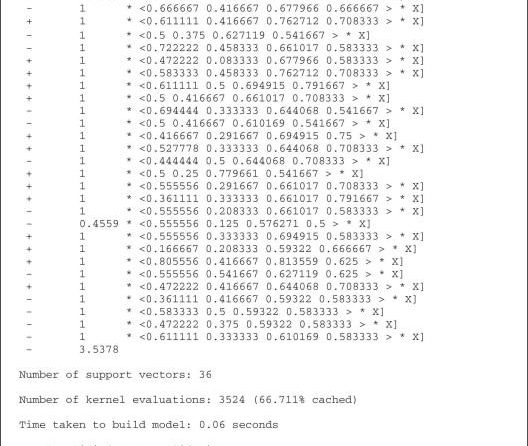The instructional methods of James Braid, a prominent figure in the early 20th-century golfing landscape, have had a profound and lasting impact on how the game is taught and learned. Braid’s approach to golf instruction emphasizes the importance of mastering essential skills through structured practice and a deep understanding of the game’s mechanics. Known for his meticulous attention to detail, Braid synthesized his experiences as a professional golfer and instructor into a comprehensive framework that prioritized both technique and mental discipline. This examination returns to the core principles of his methodology, exploring how Braid’s philosophies not only shaped the training of countless golfers but also continue to resonate in contemporary teaching practices. Through this analysis, we aim to highlight the enduring relevance of Braid’s work in fostering a deeper appreciation for the technical and strategic dimensions of golf.
Foundational Principles of Braid’s Teaching Methodology
James Braid, a prominent figure in the realm of golf instruction, emphasizes the significance of foundational techniques that elevate a player’s overall performance. Braid believed that mastery begins with a solid grasp of essential skills, prompting students to focus on key components that influence the outcome of their game. His approach meticulously integrated the importance of both physical and mental readiness, encouraging golfers to approach each aspect of the game holistically. This dual focus cultivates a comprehensive understanding of swing dynamics, course management, and psychological resilience.
At the heart of Braid’s methodology lies an emphasis on **consistent practice**. He advocated for repetitive drilling of techniques, permitting students to internalize their strokes while minimizing reliance on instinct alone. The incorporation of **visualization** techniques was also a cornerstone of his instruction, helping players to mentally rehearse their swings before execution. Braid firmly believed that visualizing successful outcomes not only strengthened muscle memory but also bolstered confidence. His teachings highlighted the need to view practice not merely as a means to an end but as an essential component of a golfer’s ongoing development.
Moreover, Braid’s instructional philosophy underscores the importance of **individualization** in coaching, recognizing that no two golfers possess identical needs or capabilities. He tailored his approach to accommodate varying skill levels and physical attributes while ensuring that foundational principles remained consistent. To facilitate this customization, Braid frequently employed a variety of teaching aids and drills designed to address specific aspects of the game. His belief in adapting to the student’s unique learning style and rhythm exemplifies a progressive approach to golf instruction that remains relevant today.
Integrating Mechanics and Mentality in Golf Instruction
In examining the instructional methods of James Braid, one finds a synergy between physical mechanics and the golfer’s mindset that is integral to his approach. Braid believed that a golfer’s performance was not solely reliant on the mechanics of their swing but also on their mental framework. By fostering a clear understanding of both aspects, he proposed that players could attain a higher level of consistency and skill.
Braid emphasized several mechanical elements that contribute to a successful swing, including:
– **Grip**: Braid taught that the grip should be firm yet relaxed, allowing for maximum control while preventing tension.
– **Stance**: He advocated for an athletic stance that provides balance and leverage throughout the swing.
– **Follow-through**: A proper follow-through is vital in maintaining momentum and ensuring the ball achieves its intended trajectory.
In conjunction with these mechanics, Braid’s methodology included mental exercises aimed at enhancing focus and reducing anxiety. He recommended that golfers engage in visualization techniques, wherein players mentally rehearse their shots prior to execution. This practice not only empowers players with confidence but reinforces muscle memory. By cultivating both the mechanical traits of a solid swing and a robust mental framework, Braid’s holistic approach offers a comprehensive path for golfers seeking improvement on the course.
| mechanics | Mental Strategies |
| Grip: Firm but relaxed | Visualization of shots |
| Stance: Balanced and athletic | Focus on breathing techniques |
| Follow-through: Controlling momentum | Positive self-talk |
Through the harmonization of physical technique and mental focus, Braid’s instructional methods invite golfers to reconsider their approach to the game. The convergence of these two domains not only enhances performance but also transforms the golfer’s relationship with the sport itself. A well-rounded understanding of these principles solidifies Braid’s legacy as a pioneering figure in golf instruction.
The Role of Repetition and Practice in Skill Development
In the realm of golf instruction, **repetition and practice** emerged as pivotal components in fostering skill development, and James Braid championed this philosophy. His methodology emphasized the need for golfers to engage in deliberate practice, allowing them to ingratiate the mechanics of their swing into muscle memory. By repeating specific drills and techniques, players could cultivate a consistent and dependable performance on the course.
Braid’s approach was fundamentally structured, focusing on various key elements that contributed to a golfer’s improvement. He encouraged students to practice essential **fundamentals** consistently, leading to the development of both power and precision. Essential fundamentals included:
- Grip: Ensuring proper hand placement for optimal control.
- Posture: Establishing a solid stance that promotes balance.
- Alignment: Aiding in accurate shot direction.
The amalgamation of these elements, practiced through repetition, facilitated a deeper understanding of one’s swing mechanics. To illustrate the effectiveness of Braid’s strategy, the following table summarizes the practice components and recommended repetition for mastering various skills:
| Skill Component | Recommended Repetitions |
|---|---|
| Grip Adjustment | 50 repetitions |
| Stance and Balance | 30 repetitions |
| Full Swing Practice | 100 repetitions |
| Putt Drills | 40 repetitions |
In essence, Braid’s instructional techniques portrayed **repetition** not merely as a means to an end, but as a crucial avenue to achieving mastery. His commitment to structured practice underscored the belief that the pathway to becoming an adept golfer lay in the hours spent refining distinct skills through repeated execution. Ultimately, his methods offered a comprehensive framework that continues to influence contemporary golf education and practice.
Adapting Braid’s Techniques for Modern Golfers
| Technique | Modern Adaptation |
|---|---|
| Solid Grip | Leveraging grip pressure analytics from sensors |
| Stable Stance | Using alignment rods and mats for optimal positioning |
| Body Mechanics | Integration of biomechanics analysis software |
By consciously merging Braid’s foundational techniques with today’s tools and methodologies, golfers can develop a more enriched gameplay experience. This synergy not only honors the legacy of James Braid but also equips players with the adaptability necessary to excel in the evolving landscape of modern golf.
Evaluating the Long-Term Impact of Braid’s Instructional legacy
James Braid’s instructional methods have left an indelible mark on the game of golf, transcending generations and influencing countless players and instructors. His emphasis on the **fundamental principles of swing mechanics** provided a solid foundation that has endured through the changes in golf technology and player dynamics. Braid advocated for a methodical approach to mastering the game, which involved understanding one’s natural swing and refining it through diligent practice. This focus on the fundamentals ensured that golfers developed skills that would remain relevant, regardless of evolving equipment or course conditions.
The long-term impact of Braid’s techniques is evident in how modern coaches and players approach practice regimens. Many of his principles, such as the importance of balance, stance, and grip, continue to be pillars of contemporary instruction. Coaches today often incorporate Braid’s methods into training sessions, highlighting the **necessity of repetition and feedback** in developing muscle memory. This blend of tradition and innovation not only preserves Braid’s legacy but also enhances the learning experience for new generations of golfers.
| Key Principles of Braid’s Instruction | Modern Applications |
|---|---|
| Balance | Critical for consistent ball striking |
| Stance | Foundation for a solid swing |
| Grip | Essential for control and accuracy |
Moreover, the philosophical aspect of Braid’s teaching methods is significant. He engaged students not just in the **mechanics of the swing**, but also in the **mental approach** to the game, cultivating a mindset geared towards improvement and resilience. Braid’s belief in the interconnectedness of technique and mental fortitude has sparked a contemporary dialog surrounding the importance of psychological training in golf instruction, ensuring that his impact will persist in shaping the sport’s future.
James Braid’s instructional methods have left an indelible mark on the landscape of golf education, emphasizing the importance of fundamental mastery and the art of practice. His keen insights into the mechanics of the game, alongside his innovative approaches to teaching, have fostered a legacy that continues to resonate with golfers and instructors alike. By analyzing Braid’s techniques, we not only gain a deeper understanding of his contributions to golf but also appreciate the enduring principles that can enhance a player’s skills. As golf continues to evolve, the foundational lessons imparted by Braid remain vital for both aspiring and seasoned players, underscoring the significance of a sound instructional framework in achieving excellence in the sport.





